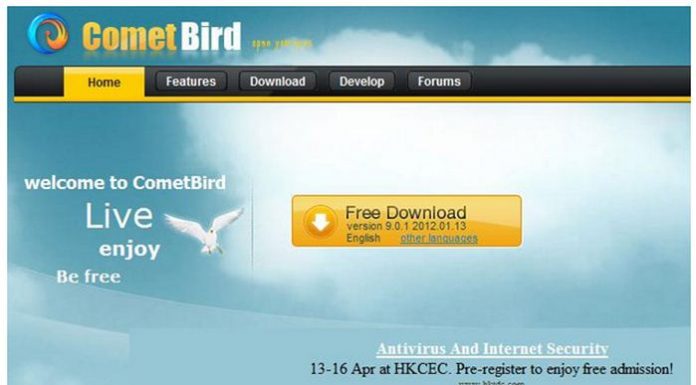Basic Facts about the Internet
Internet’s usefulness is undeniably important these days since it is capable of broadcasting information and is used to communicate and connect individuals worldwide. To really understand the importance of the internet we need to know first its birth.

HISTORY
The earliest account of the internet was an outcome of an imaginative mind of people in the 60s. They have seen the valuable use of computers like information sharing, immediate access of programs and pertinent data. One of the pioneers is J.C.R. Licklider of MIT, who proposed a network of computers globally in 1962. Hence, he was tasked to lead for the advance study of the research program for computers of the DARPA (Defense Advanced Research Projects Agency).
Together with Licklider is Leonard Kleinrock from MIT, they conceptualize packet switching. It is connecting of computers using a dial-up telephone lines but it was found out to be inadequate. That is why on October of 1966, Lawrence G. Roberts, a researcher of MIT, come up with a plan of ARPANET. It is a connection of a number of computers using a modem to facilitate the exchange of information of each of the computer.
After DARPA and Roberts finished the whole configurations for the usage of the ARPANET, in 1968, the development of packet switches named Interface Message Processors (IMP’s) was released.
In October of 1969, the pilot testing of ARPANET was done by sending a message from the laboratory center of UCLA at Los Angeles to the research center of Stanford Research Institute.
As a result, before the end of 1969, there were four computers connected simultaneously to ARPANET and the potential growth of the Internet was about to take off.
Towards the conclusion of 1970, the Network Working Group (NWG) concluded the early protocol of ARPANET, named the NCP (Network Control Protocol). When the ARPANET concluded the implementation of NCP in between 1971-1972, the users of the network is now able to start developing the applications.
In 1972, a great and extremely victorious demonstration of ARPANET in International Computer Communication Conference (ICCC) was structured. It was then the first public appearance of the network technology. Electronic mail (e-mail) was also launched during this time and since then email was the leading network application being used.
The evolution of NCP to TCP/IP as ARPANET’s host protocol, gained an exciting challenge during the start of 1983. It was then commonly used network worldwide.
Since ARPANET were built for a specific purpose limited to the scholar communities, in 1986 an alternative technology was planned for the benefit of the commercial communities. That is why the NSF (National Science Foundation) sponsored NSFNet to be of service to the whole education community with a condition that the Internet connection is for the benefit of all eligible users.
The ARPANET stopped working and moved to NSFNet in 1990 which then linked to CSNet. CSNet links the Universities all over North America next to EUNet that links the research laboratories of Europe.
During the 90’s, the tremendous acceleration of the internet is accompanied by the growth of HTML (Hypertext Markup Language), fast acceptance of browsers and the rise of World Wide Web (www) where surfers can easily access the information all around the world.
Currently, the documents of HTML (also web pages) aside from the text can be accompanied by pictures, video, music, and many more.
STAGES
1- FTP (File Transfer Protocol). It is a very good way to use if you want to transfer a file from a computer to the other but, it can’t be used for browsing. Therefore you need an ample time to search for any necessary information especially if you want to download and upload a large or several files.
- For this reason, software named Archie was conceptualized so that searching for keywords of files will be much easier. Using this software requires knowledgeable users especially of the UNIX commands to maximize its capability.
- Currently, FTP is primarily used in transferring large data and remains to be much faster than Hypertext Transfer Protocol (HTTP) to download and upload files.
2- Gopher. Gopher is a widely used information system in accessing information in the campus of the University of Minnesota using their local network and was named after its mascot. Due to the shortcomings of FTP, Gopher overcame it but when the content increases searching the system has become laborious. But then gopher was proven to be productive and within several years there are more than 10,000 gopher users worldwide.
- Veronica. It stands for Very Easy Rodent-Oriented Netwide Index to Computerized Archives. It enhanced the usability of Gopher and was conceptualized similarly with Archie to FTP.
- Jughead (Jonzy's Universal Gopher Hierarchy Excavation and Display). A local navigation service was conceptualized to ease the navigation for local networks. Because of the lack of support in multimedia, Gopher was destroyed through the arrival of the Web.
3. The World Wide Web. An organization of the servers of the internet with numerous Internet protocols and can be obtained using a browser. A browser provides an easy use of displaying graphics and can be used to show pictures together with the text. Most of the available protocols on the internet can also be found on the Web.
Due to the capability of the Web working with multimedia and superior programming languages, it has been considered to be the best growing and interesting stage of the internet.

TYPES OF INTERNET ACCESSIBILITY
1. Dial up access. Is most likely the oldest connection and is requiring you to connect using a telephone line through a detailed number. It means that the connection is not always “on” for you need to disconnect whenever you don’t want to use a net, except if you want to have an additional telephone bill.
2. Cable access. You can access the connection from the local cable TV network. But before subscribing, you need to ask for a demo to check if the service they provide is of good quality.
3. Broadband. The fastest connection and you can choose different speeds in downloading that means the higher the price, the faster the speed. In this connection, you can choose to have a wired or wireless internet.
Many more with these.


















